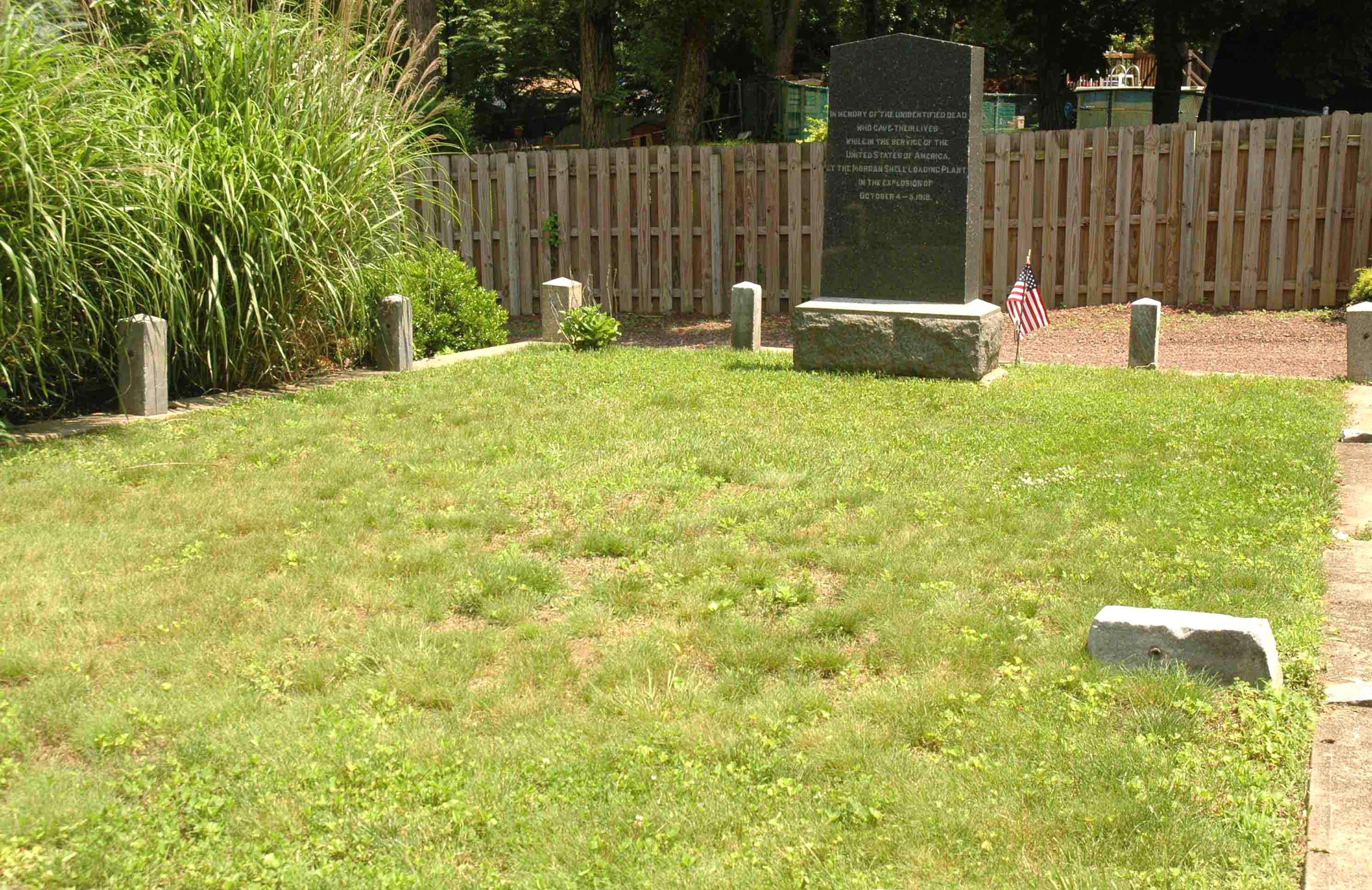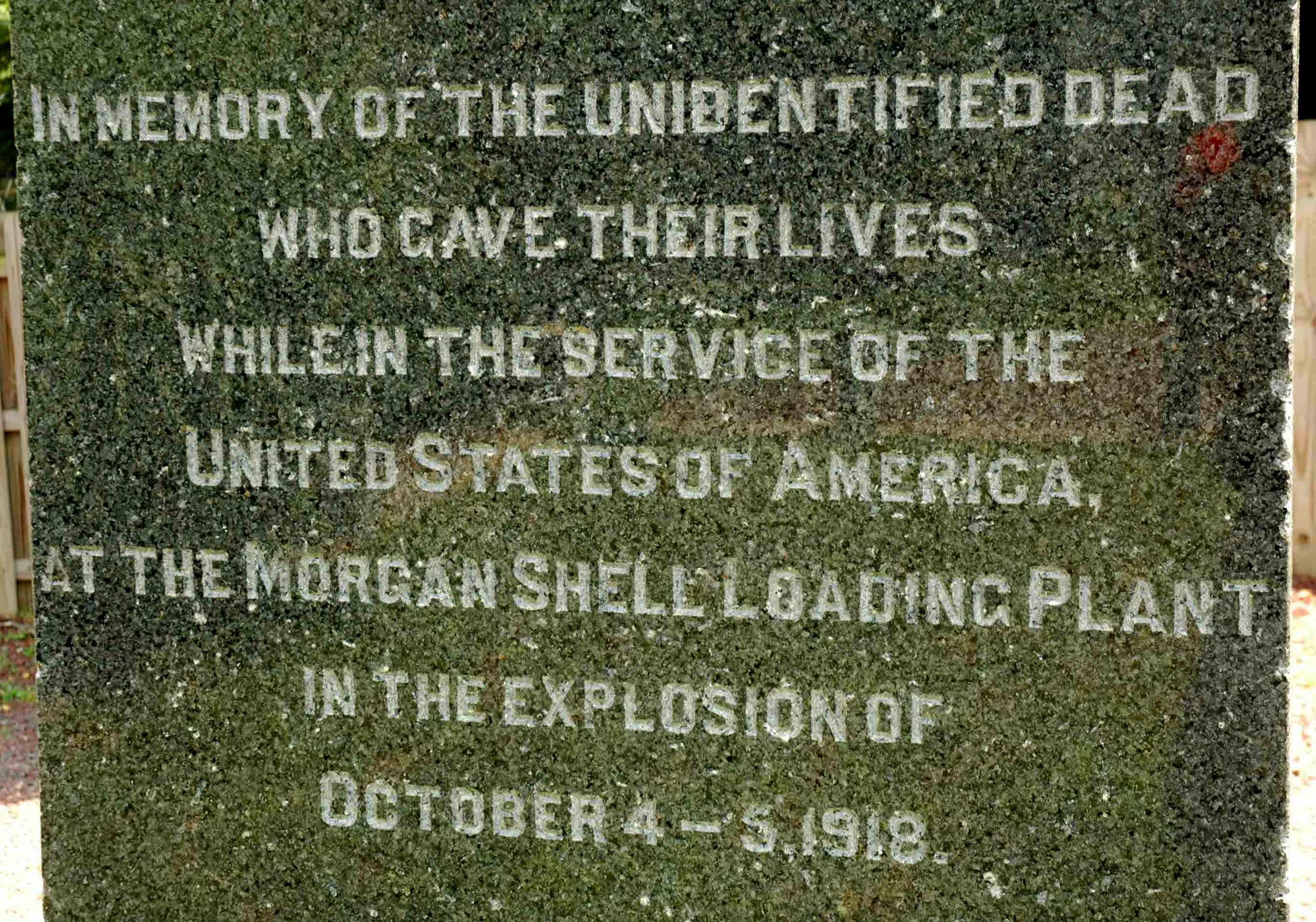Morgan Memorial – Grave Site of the Morgan Plant Unidentified Dead

Grave Site of the Many Unidentifiable Victims of the T. A. Gillespie Company Plant Explosions of 1918.
It was in 1918, at 7:40pm nearly 95 years ago, when the first of a series of explosions spanning two days went off in building 6-1-1 of the T. A. Gillespie Shell Loading Plant in rural Morgan, NJ. Building 6-1-1, located within the area of land bordered by present day Dusko Drive, Rota Drive and Gillen Drive1, contained equipment which melted and poured Amatol, a Trinitrotoluol (TNT) based explosive, into 155mm artillery shells (155mm = 6.1 inches) for shipment to France for use in the “Great War” (which later became known as “World War I”).
The remains of those unfortunate souls, who were so badly disintegrated by the blasts, were buried in a mass grave in nearby ErnstMemorialCemetery. The task of trying to identify the unidentifiable and to witness & certify each burial fell to South Amboy resident Michael Nagel, who later became the Commander of American Legion Luke A. Lovely Post 62, after each partial body part was photographed per government mandate.
In 1929, eleven years after the blast, the South Amboy Lions Club erected the monument shown in the above 2009 photograph at the site of the 20’ x 35’ grave. The inscription reads: “In memory of the unidentified dead who gave their lives while in the service of the United States of America, at the Morgan Shell Loading Plant in the explosion of October 4 – 5, 1918.”
The grave and memorial are near the entrance of the Ernst Memorial Cemetery which is in the following location:
328 Ernston Road
Parlin, NJ08859
40° 27′ 25″N, 74° 18′ 15″W (per Google Maps)
1-Building location as identified by US Army Corps of Engineers.
Originally posted on October 4, 2009, 91 years to the day after the explosions started.

Today, the site of the explosion is part of Sayreville, and the gravesite is part of Old Bridge (Parlin is part of both towns).
My grandfather worked at the Gillespie plant, and he and my grandmother, mother and aunt lived in housing nearby. My mother described what beautiful housing it was, with green oak furniture – certainly more comfortable than their former crowded home in Brooklyn. And my grandfather, Harry Wark, was certainly making more income at the plant.
My mother was 12 years old at the time, so she clearly remembered the explosion – the painfully loud bangs, the screaming, people dashing by to escape. My aunt, a couple of years younger, was standing at the kitchen sink by a window when some kind of piece of munition went flying through the window. Fortunately, she was untouched.
My grandmother fled with her two daughters, and was reunited with my grandfather, who was unscathed. But “unscathed” is the wrong word for all of this. The entire family – like so many others – suffered shell shock, and my grandfather couldn’t work for many months. They found a cheap apartment but it was hard to scrape by, and food was scarce.
My grandparents went back to see what remained of their home, and all they found was a melted bathtub amid ashes.
Thank you for bringing attention to this terrible event. I’m visiting New Jersey from the West Coast and plan to find the grave and memorial, to honor those who died.
When I was a young boy my grandmother told me about the “Morgan Plant Explosion”, as she called it. She lived about a mile or so away in South Amboy with my grandfather and their four children, including my then 5 year old mother. More than forty years had passed, and she still didn’t like to talk about it, other than to say it was terrifying. She fled on foot across the wooden bridge to Perth Amboy with her children while I believe my grandfather stayed behind. Our home on Liberty Street was built less than ten years later by my grandfather and his brother who were both brick masons.
I lived in sayreville for quite some time now and never knew about the explosion.. I found this very informative. Thank you.